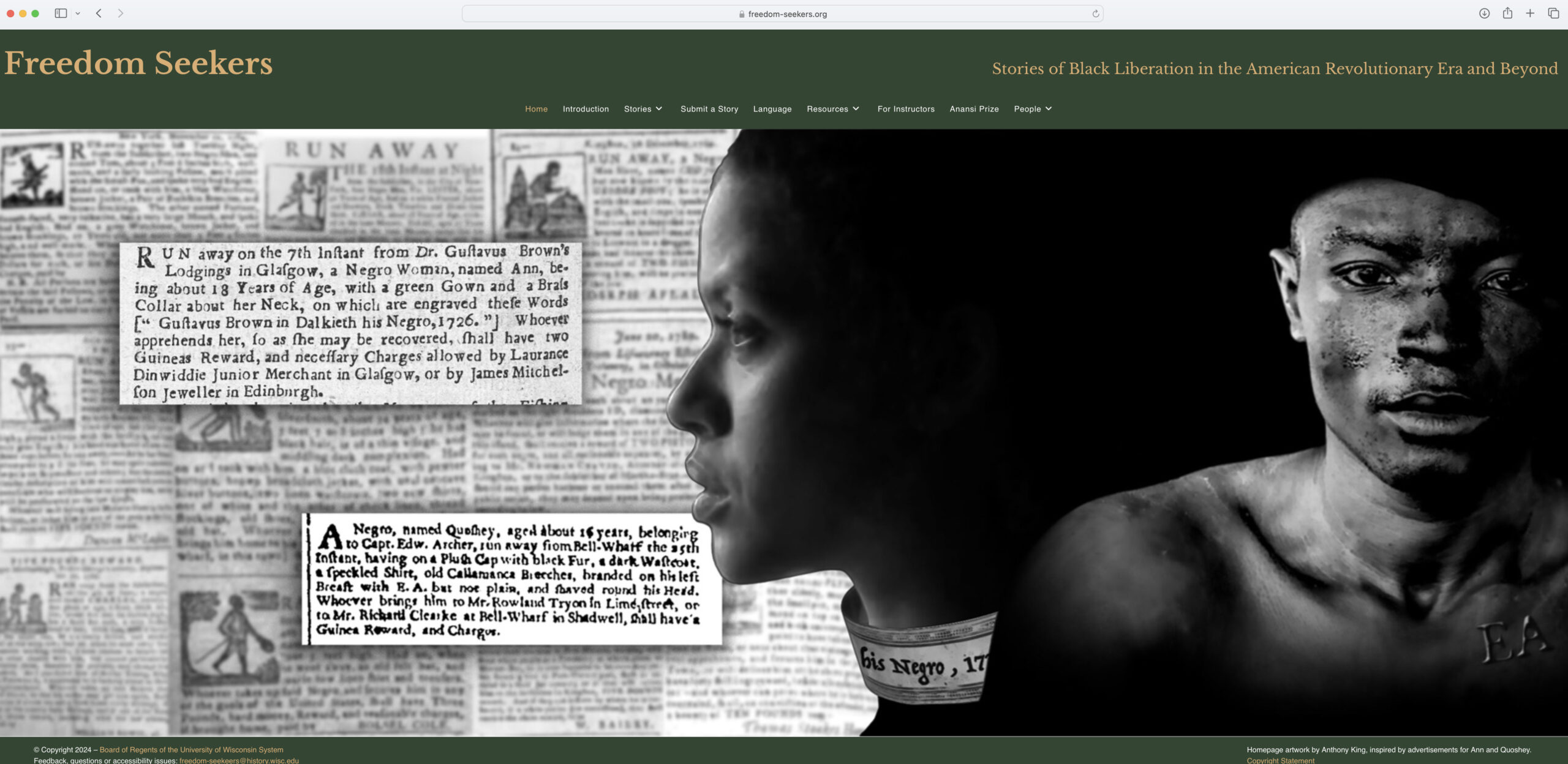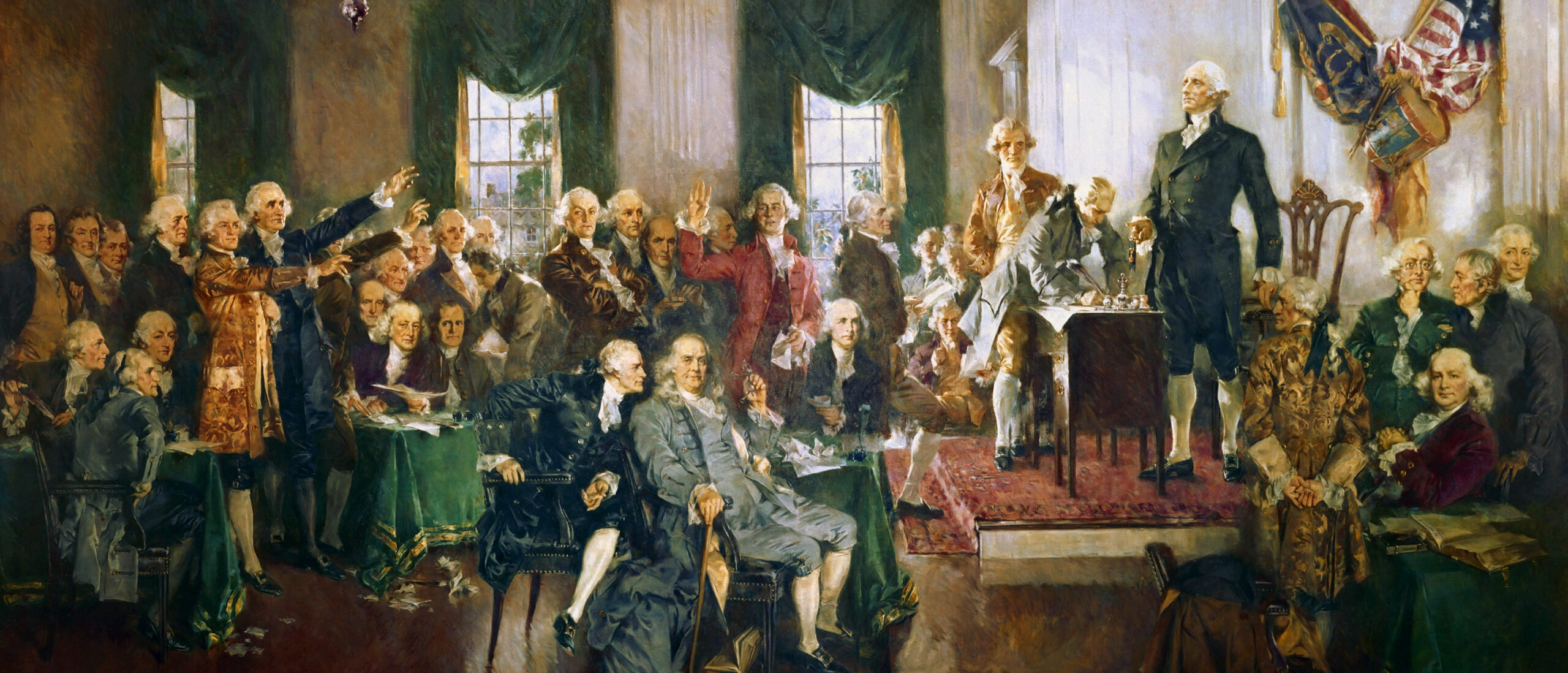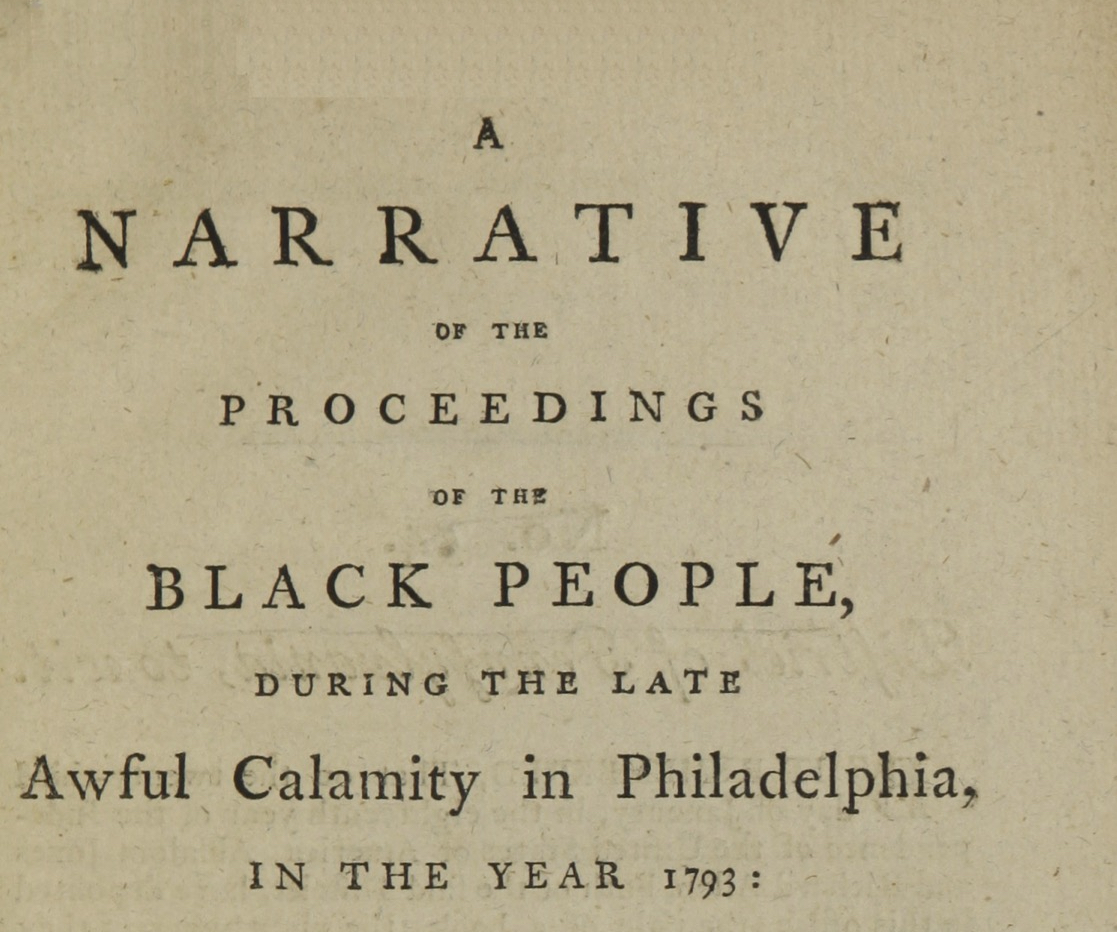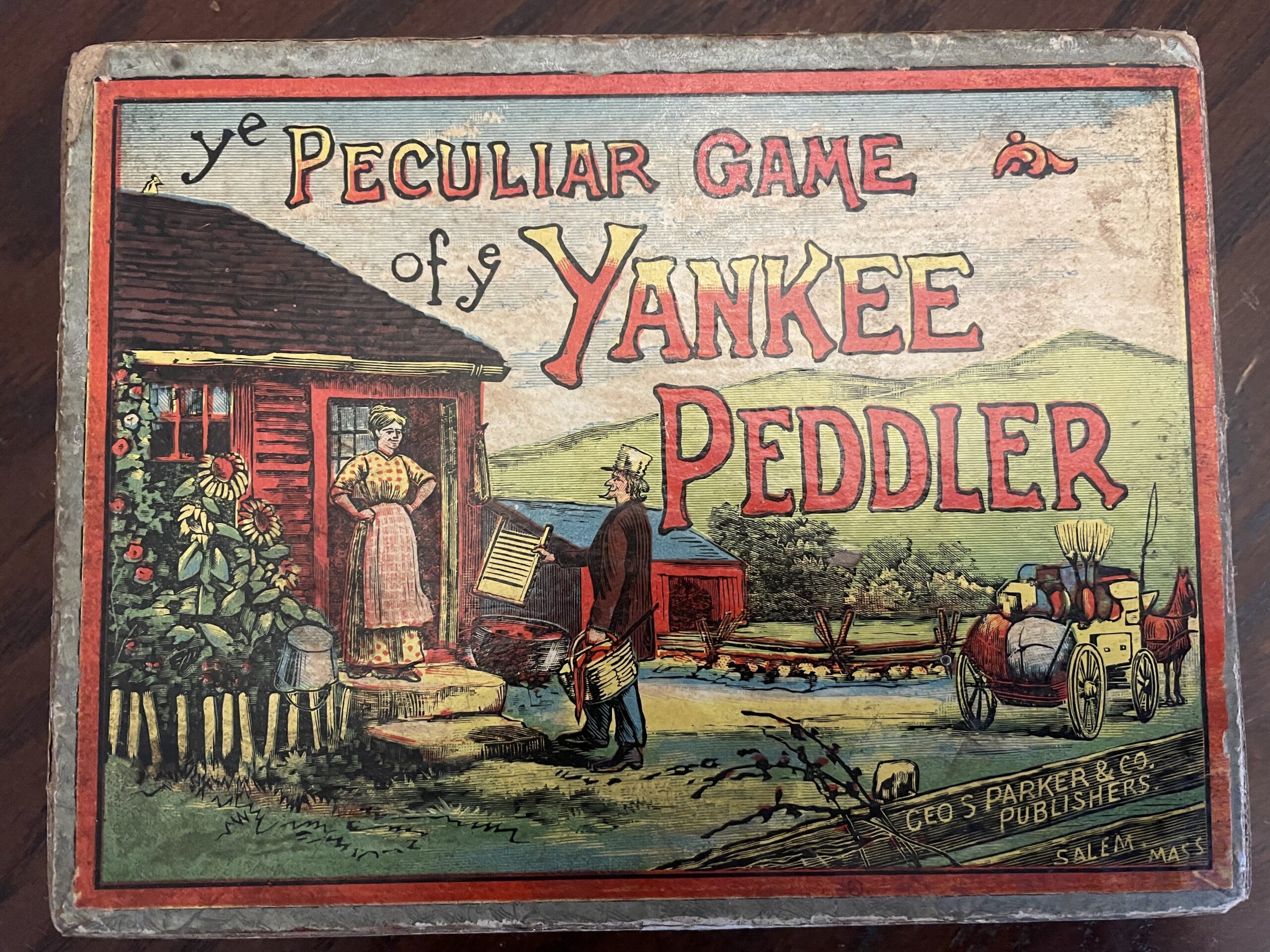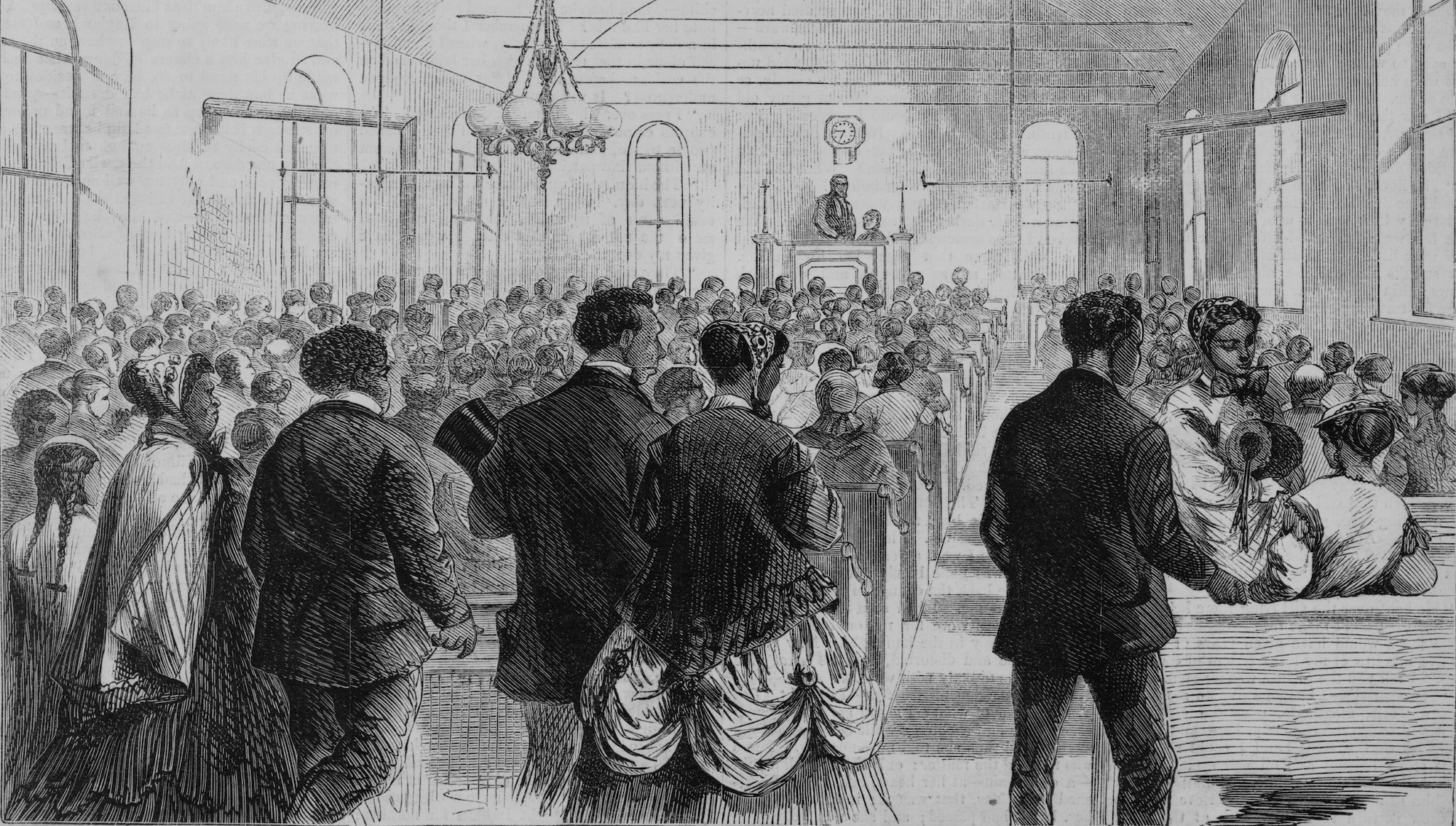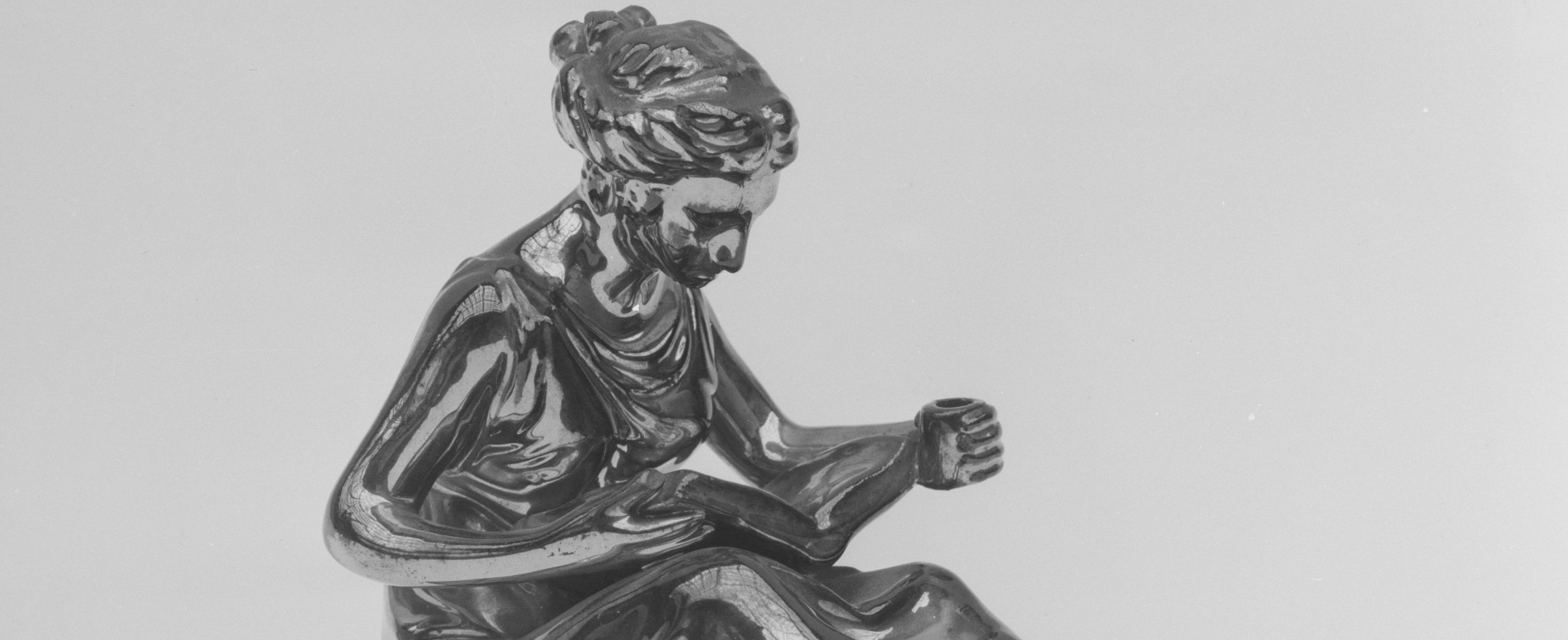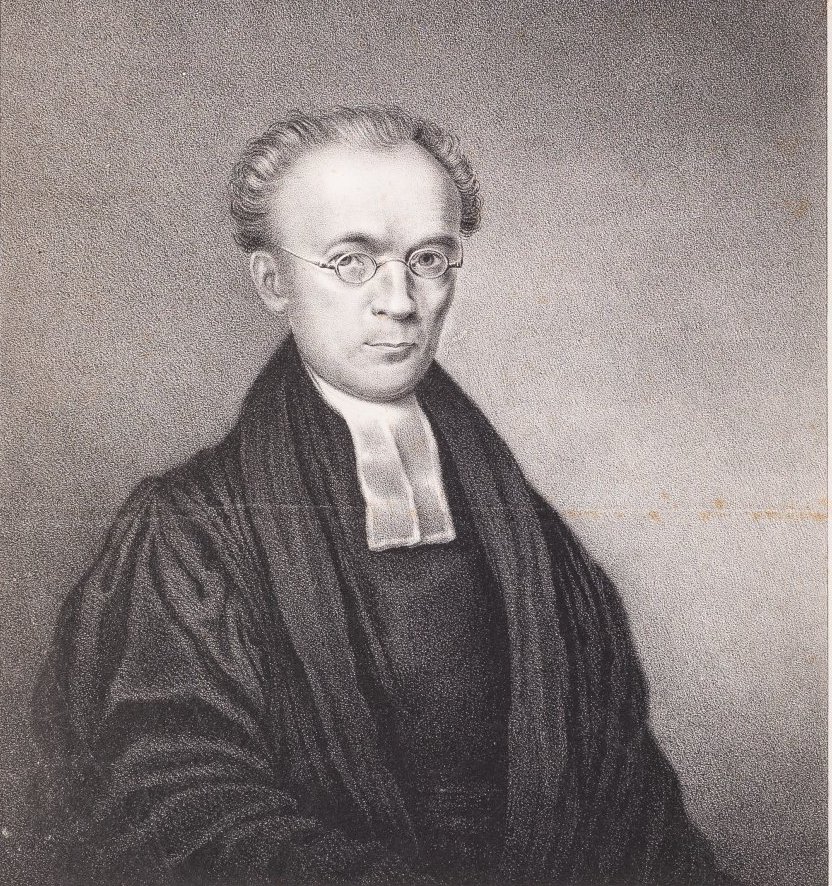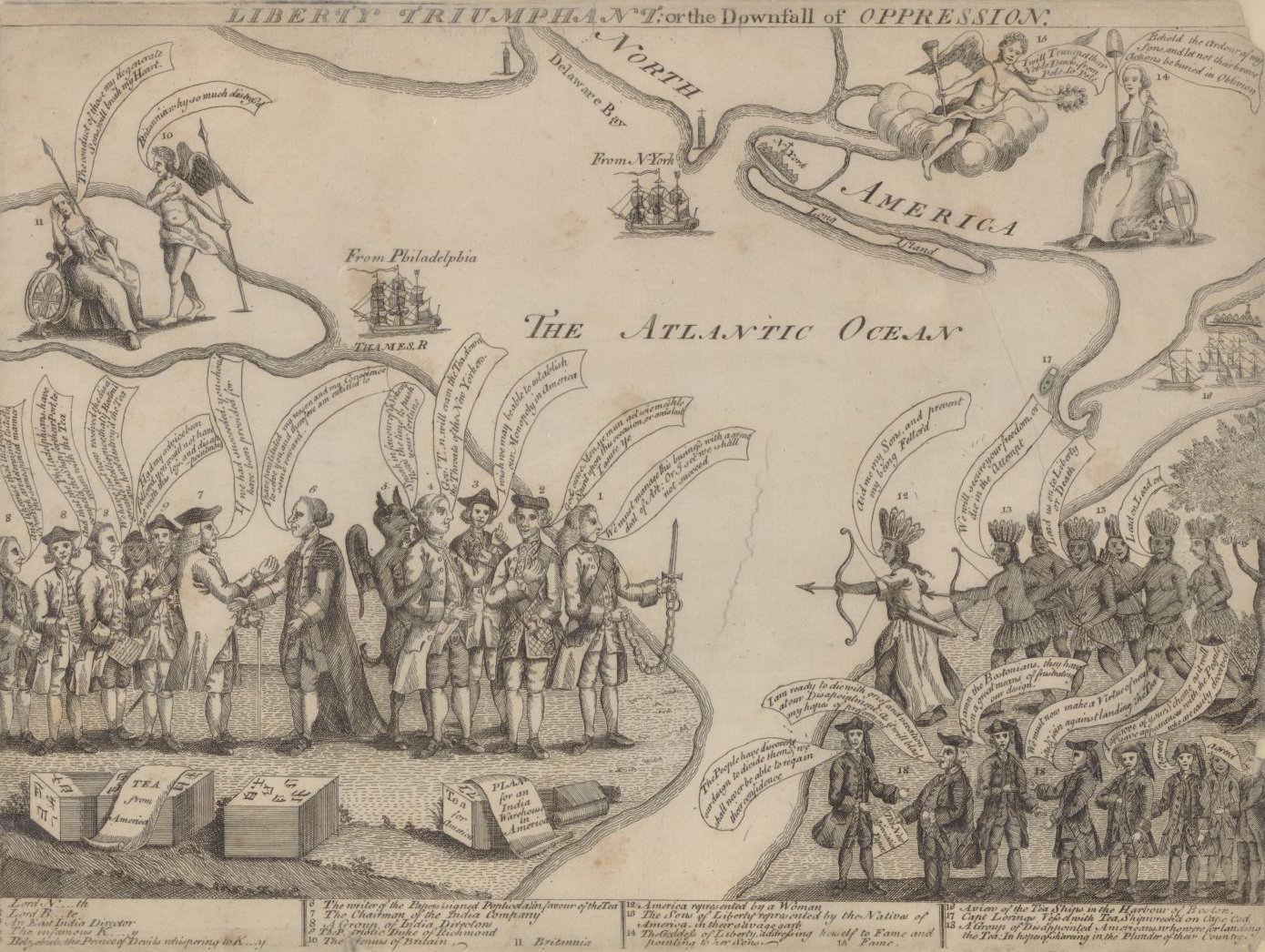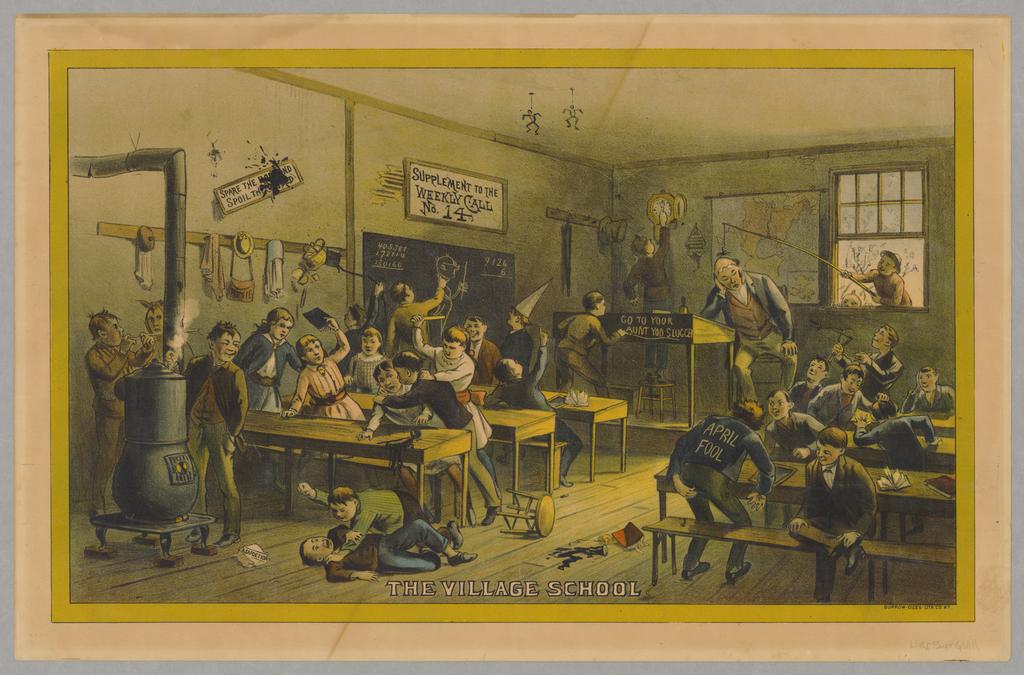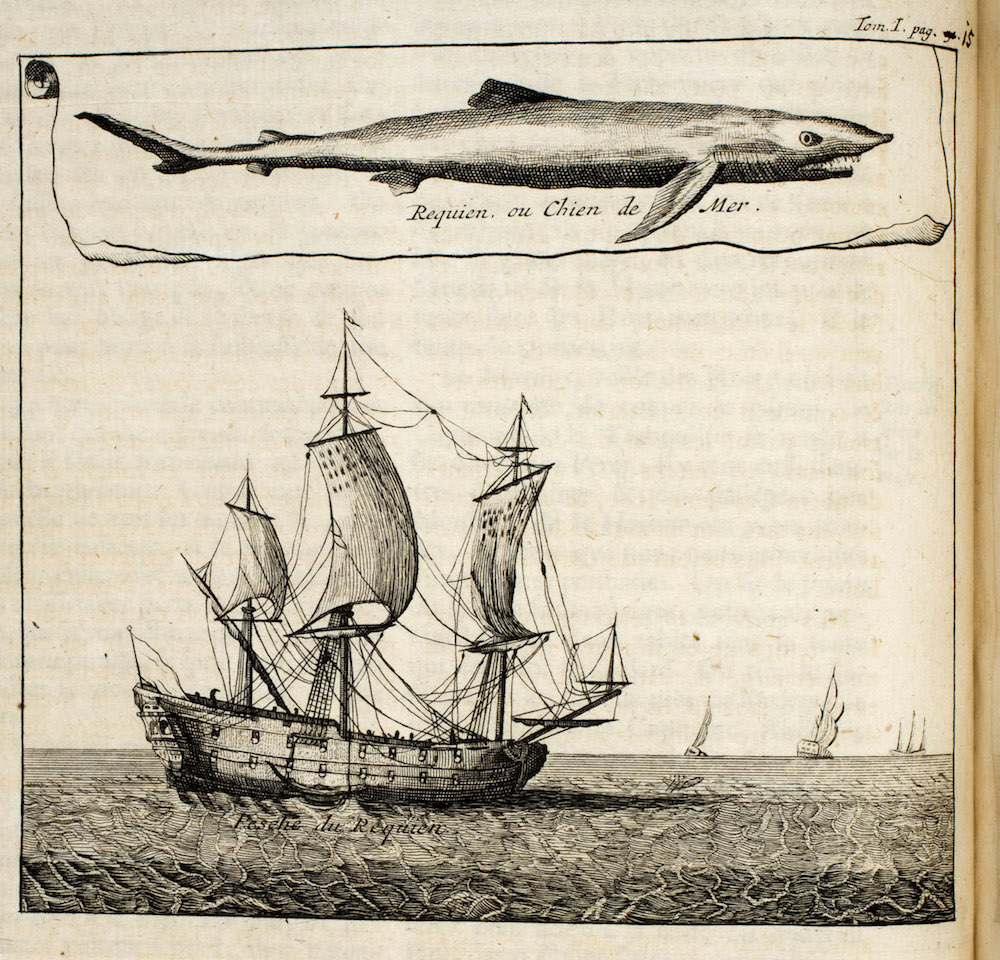Classroom Collaborations, Public Engagement and Adventure
This past September, the commemorations of the terrorist attacks on New York City and Washington, D.C., on September 11, 2001, served as an opportunity to introduce my students to the subject of Civil War memory. High school juniors and seniors in my Civil War and Reconstruction course were asked to imagine what a seventeen-year-old student in 1877 would think caused the Civil War. The majority of students suggested that their nineteenth-century peers would have pointed to slavery as the primary cause of the war. One student reasoned that “the drawn-out racial violence of Reconstruction” would have sufficed as evidence. Another student commented, fortuitously for my lesson plan, that “the war was so recent by 1877, and how could someone not know why the war was fought?”
I then asked them to explain the events of September 11, 2001: which group hijacked the airplanes, and why? The responses to the first question ranged from Saddam Hussein and Moammar Gaddafi to the Taliban, Hezbollah, and al-Qaida. I responded that perhaps the long wars in Iraq and Afghanistan clouded society’s recollection and thus their own memory of 9/11. The why part of my question was more telling, as no one had a definitive answer as to why al-Qaida attacked the United States. I provided a brief historical timeline of the events leading to 9/11 that included the regional impacts of Operation Desert Storm, post-Cold War geopolitics, cultural and religious influences, and the effects of the Israeli-Palestinian stalemate on the Middle East. Based on student responses, we concluded that there is not one clear answer to my questions regarding 9/11—this one event is too complicated for that. Students were asked to go back and consider the seventeen-year-old in 1877 and the hypothetical response regarding the coming of the Civil War. Would the causes be more easily explained than their own memories of 9/11? Could a post-Civil War teenager make sense of the pre-Civil War decades of political compromises, judicial decisions, and acts of violence that spiraled out of control during the 1850s, leading ultimately to secession and war? Most likely he could not. Perhaps the Reconstruction era would only have confused the way he viewed and remembered the war.
This activity illustrates how little students understand pivotal events in their own lifetime, a characteristic perhaps shared by Americans in 1877. To frame this argument, the students read parts of David Blight’s “‘For Something beyond the Battlefield:’ Frederick Douglass and the Struggle for the Memory of the Civil War.” In this essay, Blight states that memories of the Civil War were “out of date” to most Americans by the Gilded Age. Students were intrigued by Blight’s discussion of Douglass’s frustrated efforts to remind the nation about slavery’s role in causing the Civil War. Further, when they compared Blight’s explanation of the war’s lost memory with their own lack of understanding of 9/11, they were captivated.
At one point, a Georgia teacher asked, “You don’t have a problem that the University of Wisconsin plays football games where Confederate prisoners were once held and died?”
Introducing students to the concept of historical memory has advanced a number of my pedagogical goals. The topic allows students to explore the ways in which the present influences how we understand our past, and it is suited to using both traditional historical documents as well as classroom technology to better gauge how Americans currently remember and commemorate the past. Civil War memory provides excellent opportunities for experiential learning, an essential component of this analysis, and allows teachers an opportunity to introduce students to the practice of historical study. Students increase their self-awareness and understanding by engaging other students and historians. Through the framework of historical memory, students can present their own work and solicit the opinions of other audiences. This type of public engagement—occurring in a museum or on a road trip—enhances student commitment and comprehension of history.
Striking Conversations Between Northern and Southern Classrooms
Although teachers often assume that students have the world at their fingertips, few of my students interact with and learn from students in other places with any regularity. After our discussion about the conflicting Civil War memories of nineteenth-century Americans, I put my students (from the Upper Midwest) in contact with students in Columbus, Georgia, and Newport News, Virginia. I contacted a teacher in Georgia through an education Website, and I met an instructor in Virginia during an online History of Slavery Education seminar. My fellow teachers and I therefore planned out separate week-long units and created a Wikispace site to host all daily online interactions between our students. We collaborated first with the students in Virginia.

Both classes posted images of war remembrance in their respective communities on the Wiki. In my classes, the discussion about what images to present to our Southern colleagues was an unanticipated challenge, and we had very good discussions about what best represents “our” history. Some students were unaware of any examples of how the war is remembered in Milwaukee or Wisconsin. Our class decided to focus on monuments that acknowledge local ties to abolitionism and its military role in the war. A few students, however, thought that a mural depicting the capture and incarceration of a fugitive slave, and of the slave’s subsequent liberation by Milwaukee abolitionists in defiance of the Fugitive Slave Act, would antagonize Southern students. “Perhaps Southerners would feel offended,” stated one student, “by the appearance of the slave catcher and his dogs.” Another student was concerned that a monument called “The Victorious Charge,” which depicts Wisconsin Civil War soldiers in combat, may “rub in” the fact that the North won. Despite these concerns, the majority of students believed we needed to present the way the war is remembered as it stands, and hoped these examples would provide a more lively interaction. Other memorials we presented were an Abraham Lincoln statue, the Milwaukee Soldiers’ Home buildings, and the University of Wisconsin’s Camp Randall football stadium, whose grounds were used as a training ground and Confederate prisoner-of-war camp.
The Virginia students posted a furlough and a pardon slip that belonged to ancestors of one of their teachers: one a Yankee and the other a Confederate. But it was a photograph they shared that prompted one of my students to come into class and ask enthusiastically, “Did you see what the Southern class posted yesterday?” The photo depicts a local park’s Christmas light display that reads, “Once Divided, Forever United” with the Monitor and Merrimackfiring at one another from either end of the phrase. Students were surprised at the openness of this community to its history of secession. When I asked why, a group of students said they thought Southerners would be more defiant and not openly support the concept of reunion through public memorials. Another group of students assumed the South—and especially Virginia, which was the center of the war’s fighting—would be embarrassed by their attempts at secession and not want to publicize that effort and failure.
During the week’s online exchanges, many Virginia students made it clear that they held a memory of the war that is similar to that held by northern teenagers. Others stated that, although some in their community do fly the Confederate flag, they do not support it. One student, for example, posted on the Wiki, “What do you all think about the fact that we have a highway nearby called Jefferson Davis highway? I believe it makes Virginia look bad and we shouldn’t be remembering him.” Another stated in response to my student’s question whether European intervention on the Confederacy’s behalf would have led to a Confederate victory: “I’d like to think the outcome today wouldn’t be different. It might have taken much longer to get to where we are now but I think we would eventually get there.” These comments online and others during a Skype conversation contradicted our initial concerns and assumptions. Although they encountered more battlefield monuments—due to their location on the Peninsula—the Virginians remembered the war in a similar manner to Wisconsin students. To further illustrate this similarity, an online Wiki poll designed by our class asked both classrooms what caused the war: seventy-six percent clicked “slavery,” nineteen percent clicked “states’ rights,” and five percent clicked “a lack of respect for southern way of life.” Not one student clicked “Lincoln and his Republican party policies.”
When we collaborated with students in Georgia, we followed the same basic methodology but changed two aspects of our interaction. First, we added the preface to Gary Gallagher’s The Myth of the Lost Cause and Civil War History as a joint reading exercise; both classes responded to the reading in a Wiki page comment box. And rather than videoconferencing with the entire class, students split up into small groups of four or five and used an iPad to view one another. My students wanted the ability to speak face to face with their counterparts in an attempt to experience a personal connection. For most of my students, Southerners and their history seemed almost foreign, and the students hoped to gain an understanding that their text could not provide.
The difference between our collaborations was striking. The smaller group size provided more students the opportunity for direct experiential learning. I also believe the stronger defense of Southern heritage presented by some of the participants in Georgia allowed for clearer distinctions regarding the war’s memory. At one point, a Georgia teacher asked, “You don’t have a problem that the University of Wisconsin plays football games where Confederate prisoners were once held and died?” The question left this young group of Wisconsin football fans speechless. Although my students knew the stadium’s history as a prison camp, they had not even considered that Southerners could find fault in how their state remembers the Civil War in that space. Many saw the stadium’s use as a prison camp as so far in the past as to be irrelevant today. That question was a perfect example of how my students’ perceptions of the past were challenged by a Georgian interpretation of their history. In a later follow-up discussion, I asked my class how they would feel if the University of Georgia played football on the grounds of Andersonville. Many admitted they would be uncomfortable with that scenario. My students stated that this one exchange increased their awareness of conflicting memories of this shared national event. The Georgia class had a similar response to our conversations: a member of their classroom wrote on the Wiki, “My class enjoyed it a great deal and benefited from the paradigm shift that resulted from seeing the differences in culture and views about the Civil War.”
Through these collaborations, my students’ hypothesis—that since the majority of the war was fought on Virginia soil, the Virginians’ memory would be the strongest, or more “Southern”—was proven incorrect. They also were surprised that the linguistic differences between the two southern schools proved that a perceived “Southern-ness” varies from one region to another. For example, in addition to its stronger overall sense of pride in Southern heritage, the class in Georgia had a very distinct Southern accent and used the term “y’all” much more than the Virginia students. Most of my students assumed that the two southern schools would sound and think the same. The poll numbers from our Georgia interaction further exemplify the differences between these southern states. Fifty-eight percent of Georgia participants believed slavery caused the Civil War, and twenty percent thought it was states’ rights; eleven percent selected “lack of respect for southern way of life,” and ten percent chose “Lincoln and Republican party policies.” My students concluded from these disparities with the Virginia students’ answers that the farther south you go, the stronger the Southern memory of the war will be.
The videoconferences added faces and voices to a Southern outlook on history; this was a perspective my Northern students were previously not able to understand. Thus, these classroom interactions helped make sense of the diversity in Southern opinions and convictions, today and in the 1860s. For example, my students often assume a united front in the effort to uphold slavery in the South. But President Jefferson Davis quickly learned that support for the Confederate war effort was far from unified. My class interpreted the differences in our collaborations with the Virginia and Georgia classrooms as a modern-day explanation of this flaw in the Southern war effort.
These online technologies are essential to teaching about Civil War memory. Social media tools promote meaningful connections that extend beyond the physical classroom. Through them, students were able to share and compare assumptions about how the war is being studied and remembered online with distant partners who may or may not share their beliefs. Students were challenged to face stereotypes of other people and listen to differing points of view of their own history.
Written in Stone or Scanned in a Phone?
Online conversations about Civil War memory can broaden student communities. These and other experiential learning projects can also spur students to dig deeper into historical questions and engage the public over their complexity. Due to curricular demands that limit class time, I created a Public History Club to help students undertake more in-depth historical memory projects. The club has the support of the school administration, which has helped foster collaboration between students and local historical institutions. Currently, a group of six club members are working to call attention to an Iron Brigade veteran and his memorial in a Milwaukee Park.
Two summers ago, I stumbled upon an online reference to the Jerome Watrous Memorial Plaque in Milwaukee’s Whitnall Park. I was surprised to learn that, other than local heritage organizations, there was a lack of general public awareness or interest in this memorial. I brought this “forgotten” memorial to my Public History Club’s attention, and the students raised several questions: Who was Jerome Watrous? Why did the National Daughters of the Grand Army of the Republic decide to commemorate him with a plaque and memorial grove? Who were the Daughters? Why did the Daughters choose Whitnall Park? And why did the memorial grove disappear?
The students decided the best way to explain this memorial to the public was with a tin-plated QR code, which is a computer-generated barcode that displays information when scanned with a smartphone. Students received permission from park officials to place this QR marker, which will display a video, atop a wood 6-by-6 post near the original memorial. They then had to determine what to include in their short video, which visitors would see after scanning the bar code. What historical questions should be answered? How long should the video run to keep a park visitor’s attention? In attempting to answer these questions, the students gained valuable insights into the challenges public historians face regarding what to include and highlight from their research in an exhibition.
In order to determine when and why the memorial was placed in Whitnall Park, we looked to local archives and professional historians to provide guidance. After school, a student and I searched through microfilm rolls of old newspapers at the Milwaukee Public Library and found an article that described a tree dedication at the site in September 1939. The newspapers did not, however, reveal why the memorial was there. After a few e-mail exchanges with local historian and Marquette University High School alumnus John Gurda, the students learned that by 1939 Whitnall Park had become the county’s largest park. Perhaps, Gurda surmised, “The Daughters of GAR may have noticed the existing Civil War monuments in the city’s older parks and wanted to be involved in the newer park development.” Another student did the math and reasoned that perhaps the Daughters may have also been caught up in the seventy-fifth commemoration of the Civil War. Research also showed that the use of plaques and living memorials in the form of tree groves were popular after World War I. In addition, a park official told the students that because Whitnall Park was a former farm, memorial groves encouraged civic involvement to help forest this new community landscape. Used for decades as a place for picnics and veterans’ commemorations, the memorial grove was likely devastated by the Dutch elm beetle in the 1960s. With the death of the trees, interest in this site likely waned.

With this background information in hand, the group of students reached out to Civil War historian Kevin Levin, who Skyped with the group and discussed the value of telling the memorial’s history and the story of the surrounding public space. This discussion helped to focus my students’ vision of what narrative they wanted to share with the public. They chose not to focus on Watrous’ heroics at Gettysburg or his well-known career as a Milwaukee newspaper editor and advocate for Civil War veterans’ benefits. Rather, they decided to tell the story of the memorial plaque itself, the women who dedicated it, and the history of the park.
This past April, the Kenosha Civil War Museum invited the Public History Club to speak to a public audience as a part of the museum’s monthly lecture series. Through its “Fiery Trial” exhibit the museum tells the stories of those individuals from the Midwest, including Watrous, who played important roles in the Civil War. The students presented a slide show detailing their research on Watrous, the Daughters, and the role of this memorial in Whitnall Park. It was, however, the twenty-minute question and answer session that provided unexpected and lasting lessons. Students were asked why the memorial was located in Whitnall Park. The audience also inquired into students’ impressions of Watrous, and their perceptions of Civil War history and memory. When asked what the students enjoyed most about this project, a student replied, “I like being asked tough questions, to make connections and be challenged. It made it much more interesting than a textbook.” When asked how important technology was to shaping this project, a student commented, “Technology is everything to us, it is very important.” Not only does the use of technology draw students into public history projects, it can provide an effective means to interpret memory for a public audience. At one point the museum’s curator asked, “What can the museum do to attract your generation’s attention and interest?” Quickly, a student responded, “Use more technology, use as little text as possible, and more stimulation.” The others nodded their heads in approval.
From these questions, it was clear that there was a genuine concern from the older members of the audience about whether future generations will continue to remember the Civil War’s legacy. One person was almost in tears, moved to hear that these students took on this project; some raised their hands only to offer words of thanks. Needless to say, these students did not expect this response. One student summed up the experience as follows: “I suppose you could say we are returning the favor to Watrous for doing all he did for his fellow veterans.” Watching and listening to this interaction was a poignant lesson for me as a teacher. These students were surprised and honored that adults asked so many questions and listened to their answers. Their engagement with Civil War memory and public history created a forum in which their ideas mattered. They owned the podium and for forty-five minutes they were acknowledged as the experts. Like the classroom videoconferences, these experiential learning projects pushed students to explore tough questions, and the engagement outside of the classroom generated a deeper interest in and understanding of Civil War memory than if this project had been confined to the classroom. If future generations are to remember Civil War history, we need to provide these opportunities to create true meaning and genuine interest in young learners. Textbooks and isolated classrooms alone cannot and will not facilitate these connections.
Engaging Memory on Historic Landscapes
Nothing illustrates this point about experiential learning more than our school’s annual Civil War Summer Adventure. Tony Horwitz’s book, Confederates in the Attic, inspired me thirteen years ago to develop a Civil War excursion for students that highlighted places where the memory of the war is still alive. Last summer that dream came to fruition. Eleven students, three teachers, and I crowded into two vans for a nine-day tour of the war’s history. We followed the paths of two Northern veterans, Jerome Watrous and Barton Mitchell, whose role in the discovery of Lost Order 191 during the Antietam Campaign is disputed. (Order 191 was issued by Robert E. Lee regarding the movement of the Army of Northern Virginia during the Maryland Campaign. Its discovery by Union troops provided crucial intelligence at the Battle of Antietam.) Several of Mitchell’s comrades from the 27th Indiana provided contradictory recollections of his involvement with the Lost Order. One soldier, for example, questioned whether Mitchell actually picked up the papers, while another comrade suggested Mitchell was illiterate and could not have comprehended the order’s significance. My own blog recorded student reflections that focused on daily themes during the evenings, which were spent either in college dormitories or National Park Battlefield campsites.
The trip began with a Memorial Day commemoration in Hartsville, Indiana, where Mitchell is buried. A local Hartsville newspaper editor and I had arranged the commemoration event, and it was truly an extraordinary way to begin the trip. While Marquette High students laid a bouquet of flowers and three cigars wrapped in a copy of Lost Order 191 at Mitchell’s grave, their classmate performed “Echo Taps” with a bugler from the local Indiana chapter of the Sons of Union Veterans in attendance. One of the Sons passionately told the audience that Mitchell was indeed literate and would have understood the significance of those orders. He proved Mitchell’s literacy by noting Mitchell’s prewar occupation of town postmaster, which required the ability to read and write. Our students noted that the brief speech sounded more like a courtroom closing argument than a brief history. This experience sparked curiosity about why residents of this small town would be so passionate about this particular individual. The students were intrigued to learn how Watrous’s connection to the Lost Order is interpreted in other places. Several of the Hartsville residents in attendance offered warm-hearted thanks to the students for participating in the event and for keeping Mitchell’s memory alive by following in his footsteps. The local newspaper wrote a story about the students, who subsequently felt like rock stars. Most important, our group realized how meaningful this particular memory of Mitchell is to the dozens of people who ventured to his grave for this commemoration. Books provide the facts on historical events, but students learned here that memories of the war are still vivid and still debated.
Eastward bound, we ventured to Kentucky to ride a car ferry across the Ohio River, which had served as freedom’s gateway to many fugitive slaves. I felt it was important to cross this river from Kentucky over to Ohio for two reasons: to recreate the departure from slave to free territory and to experience the physical space of the Ohio River itself. In the middle of the river, one student marveled at how difficult it is to understand how one shore was free and the other slave just 150 years ago. Once ashore in Ohio, a guide provided a tour of the Rankin National Historic Site. Students walked the stone steps that countless slaves used to reach safety within and beyond the Rankin residence. Several students reflected on whether the slaves felt fear, hope, or some combination of the two emotions as they ascended the cliff. This visit led the students to place a historic site and its surrounding geography into the larger context of the history of slavery they had studied in the classroom. As a result, its complexities became more apparent.

Along the way the group stopped at the 9/11 memorial sites at the Pentagon and in Shanksville, Pennsylvania. Students acknowledged a close connection between Shanksville and Gettysburg, both of which endured horrific violence that forever changed their communities. We spoke to a National Park Service volunteer at the Flight 93 site who was a first responder to the scene twelve years ago. He commented that many local residents do not care for the tour buses that now roll through their streets. A student’s eyes widened and he wondered aloud “whether Gettysburg’s residents felt a similar reaction” in the years following that battle. By this point in the trip, we had learned of the hard times local residents faced in the aftermath of the battles of Antietam and Gettysburg: their homes and barns were confiscated for a plethora of military uses, and their fields were destroyed with little compensation. In the long term, however, these places thrive because of tourism, and the group hypothesized that attitudes in Shanksville will follow the same progression and local residents will eventually accept their role in history.
We learned more about Watrous and Mitchell each day of the trip. For example, we discussed how Watrous’s brigade, made up of Midwestern regiments, were initially known as the “Black Hats” upon their arrival in the Army of Potomac due to their distinctive black Hardee hats. We walked the full distance along the firing line at Brawner’s Farm to stand where Watrous and his mates in the 6th Wisconsin Regiment traded blows with the Stonewall Brigade at Second Manassas. Even the Confederates took notice of these distinctive Yankees. A few days later we followed the Black Hats through Crampton’s Gap in Maryland to Antietam’s bloody Cornfield, where we could finally refer to Watrous and his comrades as members of the Iron Brigade. Here I read aloud Lance Herdegen’s various accounts of how the appellation “Iron” was given to these men. It was with uneasy hearts that we walked through the Cornfield where our battlefield guide pointed out approximately where both Watrous and Mitchell were wounded. By the time we stood just east of Reynold’s Woods at Gettysburg, students had a deeper understanding of the wartime experiences of Watrous and his comrades from the letters and battle reports they read and the fields they walked. When I explained Watrous’s Mule Train Charge, which helped resupply the Iron Brigade around Seminary Ridge, the students felt they were listening to a real comrade in arms. They smiled upon hearing the Confederate reaction to spotting the Midwesterners on July 1, 1863, at Gettysburg; “there are those damn black hatted fellows again.” Also at Gettysburg, near Culp’s Hill, our group stood in silence and some winced at the thought of Mitchell, still nursing his leg wound from Antietam, charging across an open field only to see his unit turned back with terrible losses.
It was our connection to Mitchell that was truly extraordinary. Students were surprised to learn of the extent of the debate over whether Mitchell in fact discovered the famous Lost Order. Once again, students were confronted by another situation in which historical inquiry and memory clash. I asked the group to study the roadside historical markers, the Library of Congress Civil War Sesquicentennial exhibits, and battlefields throughout the trip to determine the differences in how Mitchell is remembered. They found it an interesting contrast that an entire marker was dedicated to Mitchell in Indiana, but that he was simply referred to as “a Union private” in the Library of Congress’s display of the Lost Order. When one student suggested that this exhibit “slighted Mitchell” by not giving him personal credit, we questioned whether the breadth of a sesquicentennial exhibit would have limited the curator’s ability to name him, or perhaps the exhibit just did not want to participate in the Lost Order debate. During long van rides, students spent time on their smartphones researching Watrous and Mitchell, finding illuminating discrepancies in the historical record. For example, one student noticed that the Civil War Trust Website states that there were three cigars wrapped inside Lee’s orders, while the Monocacy National BattlefieldWebsite states that there were two. The students were intrigued, and at the Monocacy National Battlefield they learned why there were such discrepancies through an invaluable lesson of historical analysis, source interpretation, and memory.
The Monocacy Park rangers took the time to explain all sides of this historical controversy: who most likely found the orders, where they were found, and how many cigars were likely located in General Lee’s lost envelope. They also explained their rationale for deciding where the orders were located using letters, historical maps, and the “smoking gun”: an Indiana soldier’s letter written shortly after the battle of Antietam that names Mitchell as the discoverer of the orders and the two cigars. They also gave our group photocopied transcriptions of these historical sources and one of Mitchell’s original letters. I heard one student whisper to another, “I guess that answers the question whether he was literate back in Indiana.”
The park rangers and their museum displays explained how memory of the Civil War shifted in the 1880s and 1890s to the stories of campaigns and battles. After Mitchell passed away in 1868, it seems that some of his comrades may have looked for glory in the public’s newfound interest in the war’s campaigns and battles and began to take credit for the Lost Order’s discovery. Nothing is absolutely certain regarding the Lost Order, but the rangers provided an extraordinary lesson on the reliability of historical sources and how to make reasonable assessments of an event. I repeated their instruction using the same documents and materials in a classroom unit on historical research and analysis this past fall. Consequently, we are determined to head back to Mitchell’s grave in the future and place two cigars there, as a corrective gesture to the three cigars we placed during the Memorial Day commemoration. This future trip back to Hartsville will show students how commemorations can often shift in contrast and meaning as a result of historical research.
Without our knowledge, the Monocacy Park rangers took it upon themselves to call a descendent of Mitchell and let him know that a group of Milwaukee high school students was following the wartime route of his great-great grandfather. We eventually talked with this relative just outside Shanksville, Pennsylvania, on speakerphone. From him, we learned even more about Mitchell, including his family nickname and the fact that he was one of the few abolitionists in the 27th Indiana. The descendent, however, most of all wanted to thank the students for their interest and time dedicated to his family and the war’s memory. When we hung up, the students, who had been weary after nine days on the road, were fired up; they remarked that Mitchell came to life even more through that conversation. Over the course of the trip and through all of these experiences and interactions, the students created a personal connection to the past.
Harnessing an Academic Entrepreneurial Spirit
Where will my students go from here? In April 2014, the Public History Club will unveil its QR code memorial to Jerome Watrous. Students are organizing the event with a local Daughters Heritage group. One of the Southern teachers and I plan to co-teach a Civil War Memory lesson in the future that will expand the use of videoconference technology. I also hope to share a class blog with a classroom from another part of the country, through which students post articles about Civil War history and memory and comment on each other’s work. This summer’s Civil War Adventure will head south and follow the wartime paths of the Confederate soldier Sam Watkins, 54th Massachusetts soldier Shedrick Conaway (who is buried in Milwaukee), and diarist Mary Chesnut. A highlight of the trip will be to sleep inside slave quarters on a South Carolina plantation. The group will also pick up Barton Mitchell’s trail again, because his regiment was ordered west after Gettysburg, and his lingering wound from Antietam forced him to muster out near Atlanta.
In order to help ensure social studies maintains a meaningful place alongside STEM (Science, Technology, Engineering, and Mathematics) curricula, I believe social studies teachers in middle and high schools must continue to think outside the box and harness an academic entrepreneurial spirit. This spirit underlies the projects I have undertaken, whether it is the launch of online collaborations, the formation of a public history club, or the development of student relationships with public organizations. We must continue to provide for those students who crave historical knowledge but do not receive it in their schools. In 2014, to help achieve this goal, MUHS will host our first Summer Civil War Institute for Milwaukee middle and high school students. This four-day event will bring together like-minded teachers, who have agreed to collaborate, share teaching strategies, and provide learning experiences that incorporate technology, local and virtual site visits, and the expertise of professional historians.
Civil War memory projects can provide meaningful and powerful experiential learning opportunities through which students create emotional attachments to the subject matter and to other communities. When they develop these personal connections to the past, they are increasingly willing to dig deeper into the subject matter, and learn essential skills in research and writing. Highlighting the different ways that memory is produced in our culture will also encourage students to strive to be life-long learners of Civil War and American history.
Further Reading
For more about how to implement historical memory inside and outside the classroom, see James A. Percoco, “Monumental History: Commemorating America’s Civil War Sesquicentennial,” OAH Magazine of History 25:2 (2011); Kevin Levin, “Using Ken Burn’s The Civil War in the Classroom,” The History Teacher 44:1 (November 2010); James P. Whittenburg, “Teaching Civil War Mobilization with Historic Sites,” OAH Magazine of History26:2 (2012); and Barnaby Nemko, “Are we creating a generation of ‘historical tourists’?” Teaching History 137 (December 2009).
For studies of effective and meaningful strategies incorporating technology, field trips, public collaborations, and memorialization into social studies classrooms, see Elizabeth K. Wilson, et al, “Retooling the Social Studies Classroom for the Current Generation,” The Social Studies 102 (2011); Keith A. Erekson, “Putting History Teaching ‘In Its Place’,” The Journal of American History 97:4 (March 2011); K.S. Inglis, “War Memorials: Ten Questions for Historians,” Guerres mondiales et conflits contemporains 167 (July 1992).
Useful arguments and perspectives regarding the debate over the Lost Order’s discovery and its importance to Civil War history are covered in Stephen W. Sears, “Last Words on the Lost Order,” Controversies and Commanders: Dispatches from the Army of the Potomac (New York, 1999) and Wilbur D. Jones Jr., The 27th Indiana Infantry, Giants in the Cornfield (Shippensburg, Pa.,1997). For an argument on how all fields of Civil War history should work together to remain relevant today, see George Rable, “The Battlefield and Beyond,” Civil War History 53:3 (September 2007).
This article originally appeared in issue 14.2 (Winter, 2014).
Chris Lese is a member of the Social Studies Department at Marquette University High School, a Jesuit college preparatory institution in Milwaukee, Wisconsin. He worked as a public historian and operated his own architectural design company prior to teaching.







